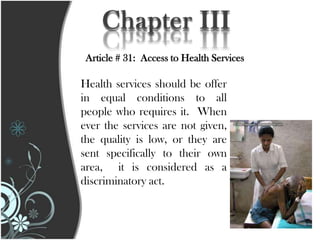Poster Session
- 1. POSTER SESSIONPresented by: Lcda. Guiselle Weelkly WilliamsonJune 29th, 2011
- 2. Different Brains,Different LearnersHow to reach the Hard to Reach?
- 3. The Impulsive LearnerAttention-Deficit DisorderIt is a behavioral disorder characterized by impulsiveness and disorientation. It is divided into three subtypes, according to the main features associated with the disorder: inattentiveness, impulsivity, and hyperactivity.The disorder is genetically transmitted in many cases and results from a chemical imbalance or deficiency in certain neurotransmitters in the brain.
- 4. The Resigned LearnerLearned Helplessness
- 5. The Challenged ReaderDyslexiaWhen a child is diagnosed with dyslexia, he may be eligible for special services or accommodations at school. He may receive extra reading instruction or help with spelling. Parents can also help children with dyslexia at home in a number of ways.Children with dyslexia often confuse "left" and "right" or "behind" and "in front of."
- 6. The Argumentative LearnerOppositional DisorderThe Oppositional Disorder(OPD) is a serious and chronic psychiatric condition that is characterized by verbal aggressiveness, a tendency to bother others, a confrontational attitude, and a disregard for how others feel.
- 7. The Learner in MotionHyperactivityHyperactivity is a state of too much muscle activity. It is characterized by chronic restlessness and disruptive behavior. HC may continually walk, jump, roll and fidget, and sometimes these actions are done disorganized and rapid.
- 8. The Out- of- Control LearnerConduct DisorderSevere and chronic, socially-disruptive behavior pattern. Students with CD are not the occasional problem learner that disrupt the class. Rather, they represent an acute and persistent challenge for the teachers.
- 9. The Troubled LearnerDepressionDepression is an intense, pervasive, and serous mood disorder that attacks both the mind and body. This highly disruptive condition typically impairs academic performance, job performance, family life, and can sometimes lead to suicide. There are four categories of depression:Major Depressive Disorder.
- 12. Seasonal Affective Disorder.Equal Opportunities for Disabled People and its RulesLaw 7600
- 13. Chapter III Article # 31: Access to Health ServicesHealth services should be offer in equal conditions to all people who requires it. When ever the services are not given, the quality is low, or they are sent specifically to their own area, it is considered as a discriminatory act.
- 14. Chapter III Article # 33: Rehabilitation ServicesThe Social Security of Costa Rica( C.C.S.S.) and the National Insurance Institution (INS) should offer services of rehabilitation, home services and ambulatory in every area or region of the country. These should include equal opportunities with human resources and adequate techniques with supportive services to guarantee an optimal attention to patient.
- 15. Chapter IV Article # 105: International Access Symbol All signs that should be made in order to indicate the access of services used by disabled people, they will be presented as International Access Symbol.
- 16. Chapter IV Article # 136: Color Contrasts In other to facilitate the movement for the people that suffers visual impairments , the contrasts of colors for stirs, sign board, walls, and doors should have similitude.
- 17. Chapter V Article # 47 Access to Means of TransportationConcerning public transportations( cab service) the Ministry of Service and Transportation, is compelled to include in each public licitation of concessions or permissions, at least 10 % vehicles with the necessary adaptations for people with special needs.
- 18. Chapter VI Article # 52: Access to Information and CommunicationThe Institutions in charge of the Telecommunications should guarantee to all people the access to the phone devices. The public phones should be installed and placed in ways where everyone could have access to them.
- 19. And what about You ?
- 20. For comments and suggestions Visit my blog atwwwprincesslover.blog.spot.com

















